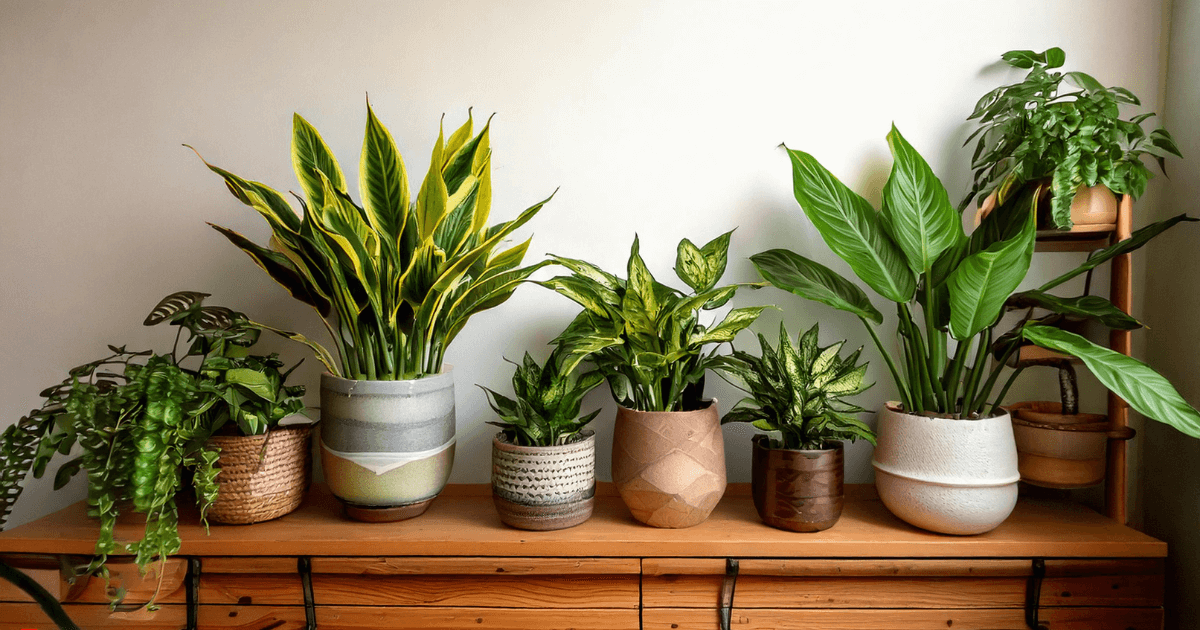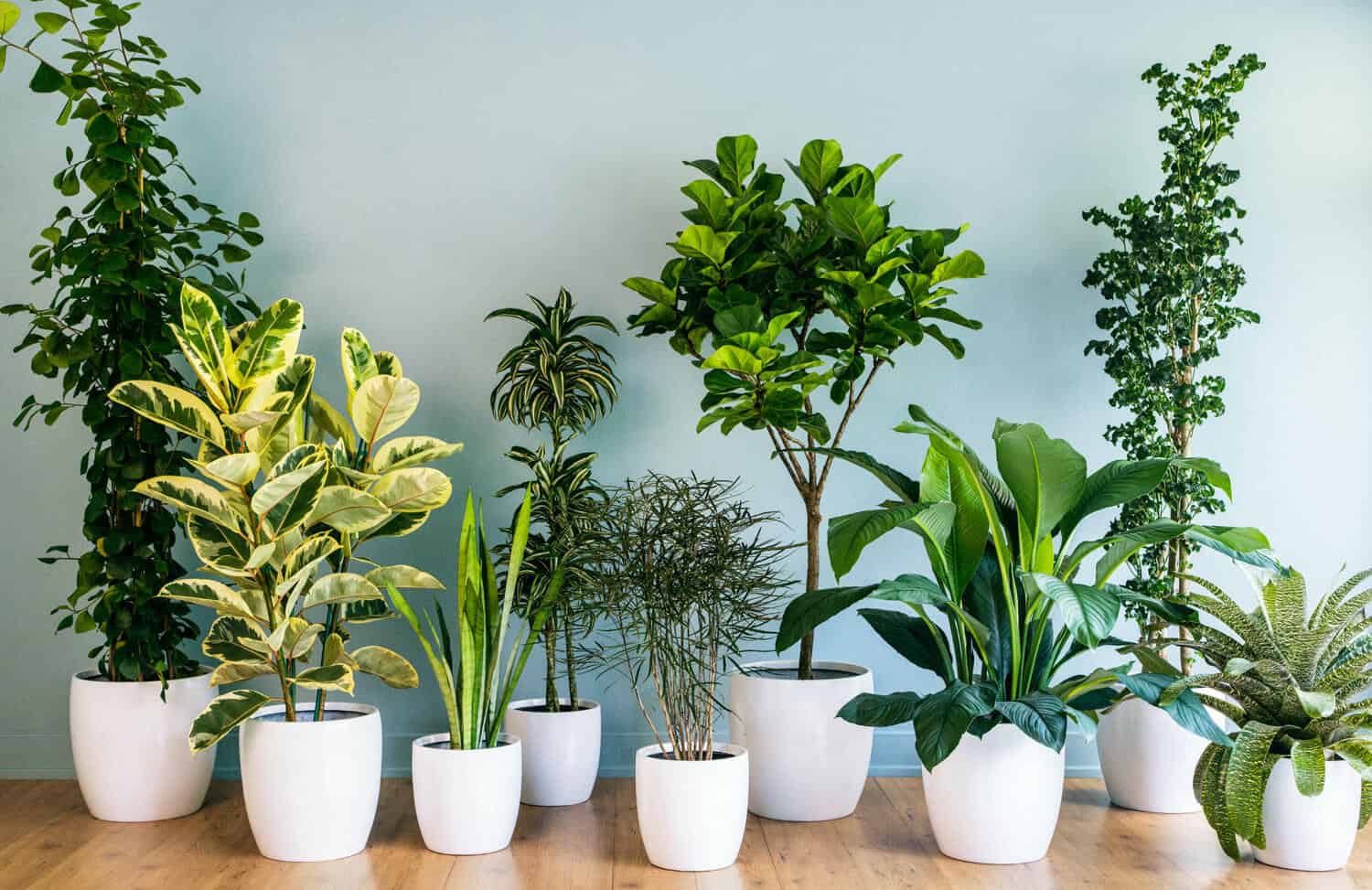A Guide to the Best Low-Light Indoor Plants for Small Spaces
A Guide to the Best Low-Light Indoor Plants for Small Spaces
Blog Article
Reveal the Secrets of Low-Light Indoor Plants and Just How They Boost Your Setting
Low-light interior plants have actually amassed boosting focus for their special capacity to improve both aesthetic charm and environmental top quality within offices and homes. These durable varieties, consisting of the Serpent Plant and Tranquility Lily, not just grow in challenging lighting conditions yet likewise play a critical role in air purification and psychological health. Comprehending the specific benefits and care requirements of these plants can dramatically impact your space. As we explore the complexities of their advantages, you might uncover understandings that might transform your surroundings in unanticipated means.
Benefits of Low-Light Indoor Plants
Although lots of people assume that indoor plants require abundant sunshine to thrive, low-light indoor plants offer a wide variety of advantages that make them optimal for numerous environments. One of the key benefits is their adaptability; they can thrive in rooms with limited all-natural light, such as workplaces, cellars, or areas with tiny windows. This function allows individuals to boost their environments with greenery, contributing to enhanced visual appeals without the demand for extensive illumination alterations.
In addition, low-light interior plants can dramatically enhance indoor air top quality by launching and filtering harmful contaminants oxygen, making living areas healthier. Research has actually revealed that specific varieties can absorb toxins, thus advertising a cleaner ambience. Furthermore, they can boost psychological well-being by decreasing tension and enhancing productivity. The existence of plants has been linked to better feelings of tranquility and emphasis.
Furthermore, low-light plants usually call for less maintenance than their sun-loving counterparts, making them excellent for active people or those brand-new to gardening. Their strength permits them to love very little intervention, hence offering a gratifying experience for plant enthusiasts and beginners alike. In recap, low-light indoor plants serve both visual and functional purposes, making them valuable additions to any room.
Leading Low-Light Plant Varieties
Low-light indoor plants been available in a selection of types, each offering one-of-a-kind characteristics and benefits matched for dark environments. Among one of the most popular ranges is the Snake Plant (Sansevieria), understood for its air-purifying capacities and architectural fallen leaves. This resistant plant prospers on neglect and can endure a variety of light conditions.
One more outstanding choice is the ZZ Plant (Zamioculcas zamiifolia), which features glossy, dark green fallen leaves and is extremely drought-tolerant. Its versatility makes it a favorite for workplaces and homes with limited sunshine.
The Pothos (Epipremnum aureum) is also a leading competitor, with its trailing vines and heart-shaped fallen leaves - Best low-light indoor plants. This versatile plant can be educated to climb or waterfall, including aesthetic passion to any room

Care Tips for Low-Light Plants
Taking care of low-light interior plants calls for a nuanced understanding of their particular needs to make certain optimal development and vigor. It is essential to choose the ideal potting mix, as a well-draining soil is critical to protect against origin rot. A mix developed for houseplants, often having peat moss and perlite, functions well for a lot of low-light ranges.
Watering is one more key facet of treatment. Low-light plants typically need much less constant watering contrasted to their sun-loving equivalents. It is advisable to check the leading inch of soil; if it really feels dry, it's time to water. Overwatering can lead to problems such as mold and mildew and root degeneration.
Fertilization needs to be approached with care. During the expanding season, a watered down fluid plant food can be used monthly, however in winter months, many low-light plants enter dormancy and call for little to no fertilization.
Lastly, it's crucial to regularly clean up the leaves to remove dirt, permitting better light absorption. By sticking to these care ideas, you can cultivate a successful setting for your low-light indoor plants, improving both their look and longevity.
Enhancing Air Quality With Plants
Indoor plants play a substantial function in improving air quality within homes and office. With the process of photosynthesis, these plants absorb discover this info here co2 and release oxygen, adding to a much healthier environment. Furthermore, certain low-light indoor plants have the capability to filter unsafe contaminants, such as formaldehyde, trichloroethylene, and benzene, which are commonly found in indoor atmospheres.

Moreover, the presence of interior plants can boost moisture degrees, which aids alleviate dry skin and respiratory problems, better boosting overall health. This ability to boost air top quality not only promotes physical health and wellness but additionally sustains psychological wellness.
Integrating low-light indoor plants right into your living and functioning spaces can lead to a more invigorating and vibrant environment (Best low-light indoor plants). Purchasing these all-natural air cleansers is a basic yet efficient method for enhancing indoor air top quality and fostering a much healthier lifestyle
Creating a Tranquil Indoor Area
The combination of plants right into living spaces not only boosts air quality however likewise adds to a peaceful environment. Low-light interior plants, such as snake plants and pothos, are particularly reliable in developing a tranquil setting, as they flourish in conditions that may otherwise be unwelcoming for check over here other plant. Their lush vegetation supplies a relaxing aesthetic, decreasing stress and anxiety and promoting relaxation.
Integrating these plants into your home or workplace can stimulate a feeling of peace and health. Strategically putting them in areas where you invest significant time, such as living spaces or work spaces, permits an immersive experience with nature, which has been revealed to boost state of mind and cognitive feature.
Additionally, the gentle activity of leaves in action to air flow can produce a dynamic aesthetic component that enhances the overall ambiance. Take into consideration utilizing a selection of plant elevations and appearances to add deepness and interest to your area. With thoughtful placement and treatment, low-light indoor plants can transform any type of location into a serene refuge, fostering not just visual contentment yet additionally psychological and psychological wellness.
:strip_icc()/peace-lily-spathiphyllum-wallisii-domino-bd41865a1-252ea4c0b35b43d19a41435b16a9cd01.jpg)
Final Thought
Integrating low-light Go Here interior plants into different atmospheres yields considerable advantages, consisting of improved air high quality and boosted aesthetic appeal. These durable species not only grow in minimal light yet also contribute to a calming atmosphere, promoting mental and emotional wellness. By choosing appropriate varieties and applying proper treatment strategies, individuals can efficiently cultivate a peaceful indoor room that cultivates health and efficiency. The transformative power of low-light plants underscores their worth in improving both property and work-related setups.
Although many individuals presume that indoor plants call for plentiful sunlight to flourish, low-light interior plants offer a wide range of advantages that make them suitable for various environments.In addition, low-light interior plants can substantially improve interior air high quality by filtering harmful contaminants and releasing oxygen, making living rooms healthier. Furthermore, certain low-light indoor plants possess the capability to filter harmful contaminants, such as benzene, trichloroethylene, and formaldehyde, which are frequently found in indoor atmospheres.
Low-light indoor plants, such as serpent plants and pothos, are especially reliable in producing a serene atmosphere, as they thrive in problems that may otherwise be unwelcoming for other plant.Including low-light interior plants into numerous settings yields significant benefits, consisting of improved air high quality and enhanced aesthetic allure.
Report this page